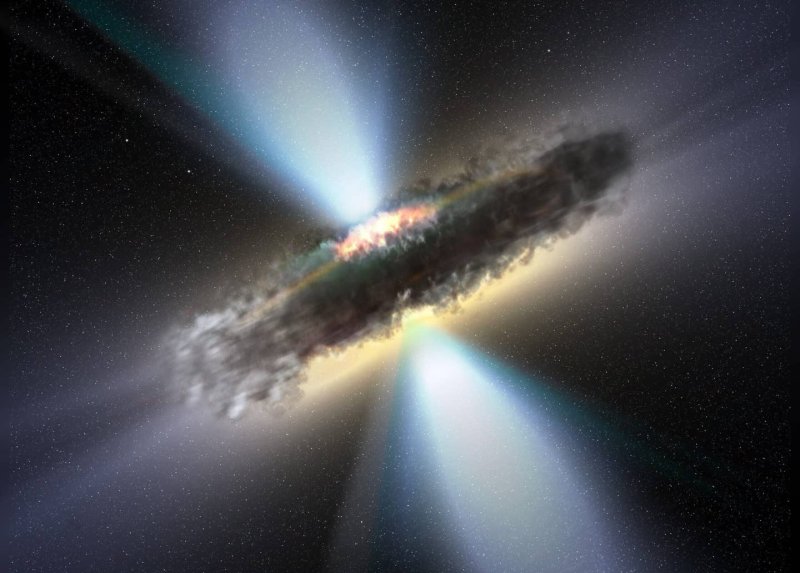

The environment around this quasar is very unique in that it's producing this huge mass of water," stated Matt Bradford from NASA's Jet Propulsion Laboratory. "It's another demonstration that water is pervasive throughout the universe, even at the very earliest times." Bradford leads one of the teams behind this groundbreaking discovery. Their research, partially funded by NASA, appears in the Astrophysical Journal Letters.
Quasars are powered by enormous black holes that consume surrounding gas and dust, emitting vast amounts of energy. The quasar in question, APM 08279+5255, harbors a black hole 20 billion times more massive than the sun and produces energy equivalent to a thousand trillion suns.
Although astronomers anticipated finding water vapor in the distant universe, detecting it this far away is unprecedented. The Milky Way contains water vapor, but in significantly smaller amounts—4,000 times less than that found in the quasar, as most of our galaxy's water is frozen in ice.
Water vapor acts as a crucial trace gas, revealing much about the quasar. In APM 08279+5255, the water vapor is spread across a gaseous region hundreds of light-years wide. This indicates that the quasar bathes the gas in X-rays and infrared radiation, making the gas unusually warm and dense by astronomical standards.
While the gas temperature is a frigid minus 63 degrees Fahrenheit, it is still five times hotter and 10 to 100 times denser than typical galactic environments.
Measurements of water vapor and other molecules, like carbon monoxide, suggest there is enough gas to fuel the black hole until it grows sixfold. However, the future of this gas remains uncertain; it could condense into stars or be expelled from the quasar.